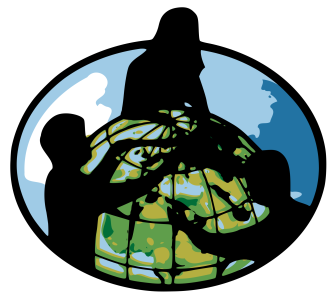I still remember the first time I read a piece of writing that felt like it really, truly understood me.
I was a junior in high school.
Now, let that fact sink in for a second. I was 16 before I encountered writing that truly mirrored some of my life experiences. Don’t get me wrong, I love to read and had books I absolutely loved as a kid—I devoured series like Harry Potter, The Babysitters Club (and the edgier California Diaries), and loved books I read for class, like Lord of the Flies (still a favorite to teach), The Things They Carried (still a favorite novel of all time), and anything by William Shakespeare. But growing up in a mostly white community was compounded by the fact that I was taking A.P. Language and Literature and, thus, reading a canon of literature that is still dominated by white, male voices.
So, when I sat down to take the AP Language test in 2004 in our high school gym, I flew through an essay about rhetorical strategies and crafted some opinion piece on a “controversial topic” (I would love to read what I wrote in 2004). Then, I turned the page and read a piece from Richard Rodriguez’s Days of Obligation.
I was absolutely stunned. I remember looking around the silent gym with a stupid grin on my face, desperately wanting to share the moment with my friends—they were all Asian or white, but I hoped they would at least appreciate my joy. This is it! I remember thinking. This is me! This is how I’ve felt and how I see the world!
It was empowering and impactful. I got so excited, I’m pretty sure my essay wasn’t nearly as clear as it could have been because I was caught up in the OMG I LOVE THIS SO MUCH moment.
More than 10 years later, I still remember that moment (and have read more of Rodriguez’s work in the process). Now, I’m a middle school English teacher and, like many teachers, am trying my best to employ the “windows-and-mirrors” theory to my classroom. It is essential that literature not only be a tool to expose students to other ideas but also to mirror and validate their culture and life experiences as well.
The movement towards media representation is certainly making traction (“Black Panther” and the Wakanda curriculum are examples of this). Unfortunately, there are times where we as teachers need to push ourselves and our community to do better.
Recently, Patrick Harris II, a 5th and 6th grade ELA and social studies teacher, noticed such a case on WeAreTeachers, the popular teacher resource website. In an article about great short stories for middle schoolers, Harris noticed something problematic:
Every. Author. Is White. EVERY LAST ONE LOL.
24 Best Short Stories for Middle Schoolers - WeAreTeachers //t.co/EMgVui4psk via @WeAreTeachers
—Patrick Harris II (@PresidentPat) March 18, 2018
While the article was written in 2016, a search yielded no additions to the list nor an acknowledgment of the lists lack of diversity. The list also only mentioned a woman twice (the same author, Shirley Jackson). Others chimed in, voicing their disapproval and some offering suggestions:
—Shana V. White (@ShanaVWhite) March 18, 2018
@TheWeirdTeacher @WeAreTeachers Seventh Grade by Julia Alvarez is a great one
—plainy (@plainy) March 19, 2018
This is a constant battle that I think mostly comes from ignorance rather than racism. Some great stories listed in comments. A couple others: “The Scholarship Jacket” Marta Salinas, “Amigo Brothers” Piri Thomas, “Thank You, Ma’am” by Langston Hughes.
—Jon Bennett (@jbennett830) March 19, 2018
In case you are still looking for good short stories: In the Country by @MiaAlvar Thing Around My Neck by Chimamanda Ngozi Adichie, Ways of White by Langston Hughes, Drown by @junotdiaz, Republic of East LA by @luisjrodriguez
—Nicole Da Silva (@nicoletdasilva) March 18, 2018
When I emailed the author, Hannah Hudson, the editorial director of WeAreTeachers, she noted the issue and said she appreciated the “push to do better.” She also noted that this was an “older, crowd-sourced piece of content and not reflective of our mission to be as inclusive as possible not only in our reading recommendations but our overall approach to pedagogy and classroom life” and promised a new, updated list soon.
I appreciate Hannah’s response to me, and the action to remedy the situation. It made me realize just how much we’ve normalized white male voices as the default literary canon. Not only did a prominent website assumedly not notice the issue, but the teachers who shared their ideas also only added to that white-washing of middle school literature.
We all need to do better, and we need to support each other as we grow our understanding and critical lens of our work. We are all operating from a system that has blinded us from the diverse array of ideas and stories we should have heard long ago. That means teachers must create a culture that challenges and supports each other to work against the indoctrination the hegemony has been perpetrating in our educational system for generations.
If we know that our students are at the center of our work, it means not shying away when they don’t get the representation they deserve. It means doing the research and the work to make sure that a diverse group of voices and stories are just as prominently known as those we’ve been teaching for decades.
Doing this work is an active practice. It means we must consistently try and ask how we create more culturally responsive classrooms. When we are asked to share resources, we must actively be working to make sure we are including the voices of those traditionally not heard, or bringing people from those communities into the conversation.
There’s a reason that moment in the gym still resonates with me, even now. It was one of the first times I finally felt like my story mattered enough to be shared and read by other people. I finally felt like I came from a culture worth listening to. It was like looking in the mirror and seeing myself as worthy for the first time.
No one should have to wait until they are 16 to feel that way. Our students should know, from the beginning, that their voices and stories matter.
And we’re the ones who can fight for those mirrors. We’re the ones who can help make that a reality.

Photo via the author.


